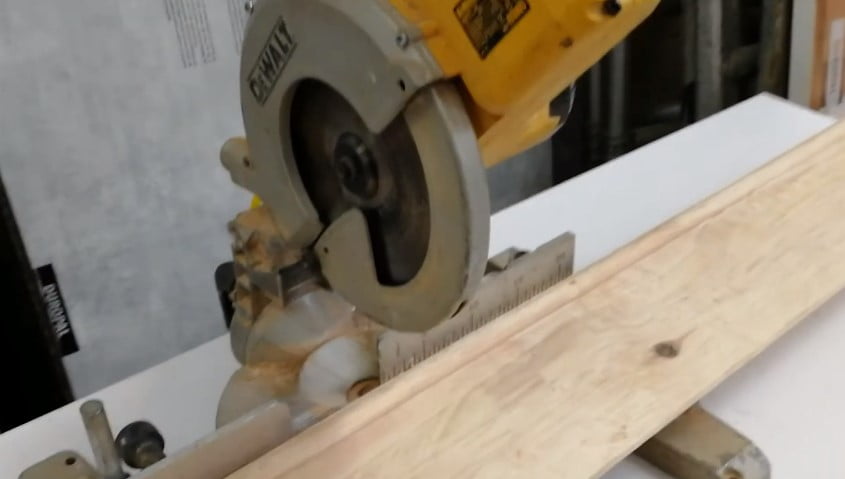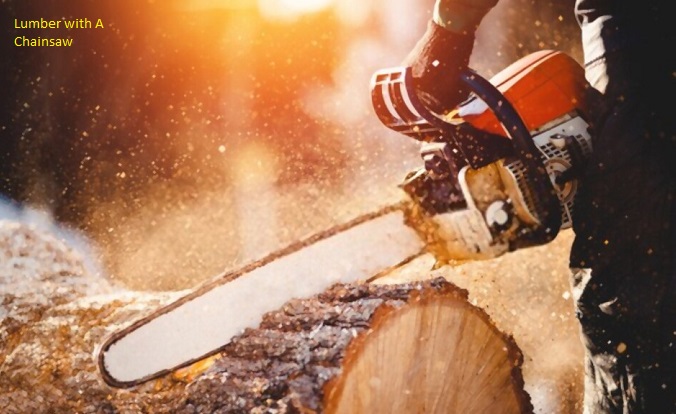A skirting board is a molding that is fixed to the wall around the perimeter of a room, hiding the joint between the wall and the floor. Skirting boards also protect the wall from bumps and scuffs. The most common type of skirting board is made from wood, but there are also plastic and metal versions.
A mitre saw is a saw that is used to cut angles. It can be used to make a variety of different types of cuts, including skirting board cut, miter cuts and bevel cuts
In the absence of a miter saw, you may feel like you are in a bind. Won’t worry! The good news is that you can also cut skirting boards using different methods.
In this article, we cover a few tools and techniques to help you cut a skirting board without a miter saw.
What saws is used to cut skirting boards?
There are many different types of saws that can be used to cut skirting boards. A hand saw, jigsaw, or circular saw can all be used, depending on the thickness of the skirting board and the type of cut you need to make.
Hand saw: For thinner skirting boards, a hand saw can be used to make straight cuts.
Jigsaw: A jigsaw can be used to make both straight and curved cuts in skirting boards.
Circular saw: A circular saw can be used to make straight cuts in skirting boards.
Required Tool for Cutting Skirting Board
When you’re thinking about cutting a skirting board, here are a few tools to help you out:
- Hand saw
- Jig saw
- Circular saw
- Pencil
- Ruler
- Mitre box
- Chisel Hammer
- Tape measure
- Skirting board
- Spirit level
Method 1: Cutting a Skirting Board with a Hand Saw
If you’re looking to save a little money on your next home improvement project, you might be considering cutting your own skirting board. Skirting board is the trim that goes around the bottom of a wall, typically near the floor. It can be made from a variety of materials, including wood, plastic, or metal. If you’re going to cut your own skirting board, you’ll need a hand saw.
A hand saw is a simple tool that can be used to cut wood, plastic, or metal. It consists of a blade that is attached to a handle. When cutting skirting board with a hand saw, you’ll want to use a straight edge as a guide.
If you need to cut a skirting board, you can do it easily with a hand saw. Here’s how:
Step 1: Measure the length
There is no definitive answer to this question as the length of skirting board you need to cut will vary depending on the size and shape of the room, as well as the style of skirting board you are using. However, there are some general tips that can help you to measure the skirting board accurately.
Firstly, you need to measure the height of the wall from the floor to the ceiling. This will give you the overall height of the skirting board you need. Then, you need to measure the width of the room. This will help you to determine the correct size of skirting board to buy.
Once you have the measurements, you can use a tape measure to measure the length of the skirting board needed. Bear in mind that you will need to leave a gap of at least 5mm between the skirting board and the wall, so make sure to take this into account when measuring.
Step 2: Mark the measurement
Mark is a measurement on the board that is used to measure the distance between two points. It is usually used to measure the distance between two points on a piece of paper or a ruler.
Step 3: Cut along the marked line
Cutting along a marked line with a hand saw is a basic woodworking skill. When done correctly, the cut will be smooth and the line will be clean.
Step 4: Sand the cut edge
When you are cutting a board, you will often have to sand the cut edge to make it smooth. This is because the saw often leaves a rough edge.
To sand the edge, you will need some sandpaper. You can use any type of sandpaper, but it is best to use a fine-grit sandpaper.
Start by putting the sandpaper on a flat surface. Then, put the board on top of the sandpaper. Next, use your hands to sand the edge of the board. You should move the board back and forth across the sandpaper.
You should also use circular motions to sand the edge. Be sure to sand the entire edge of the board. If the edge is still rough, you can sand it some more. When you are done, the edge should be smooth.
A hand saw is a simple tool that can be used to cut the skirting board. It is easy to use and it is a common way to cut the skirting board.
Method 2: Cutting Baseboard Corners with a Circular Saw
Cutting baseboard corners with a circular saw is a great way to save time and get a clean, professional-looking cut. Here are the steps to do it:
- Measure and mark the cut line on the baseboard.
- Set the circular saw to the same depth as the baseboard and cut along the marked line.
- Be sure to keep the saw blade pressed firmly against the baseboard as you cut, so you don’t end up with a wavy edge.
- If necessary, use a file or sandpaper to smooth out the edge of the cut.
Method 3: Using a Jigsaw to Trim Baseboard Corners
If you’re looking for an easy way to trim your baseboard corners, a jigsaw is a great tool to use. Here’s how to do it:
- Measure the width of the baseboard and mark the spot where you want to cut it.
- Set the jigsaw blade to the desired depth and cut along the marked line.
- Sand the cut edge to make it smooth.
- Apply caulk to the edge of the baseboard and press it into place.
Faq
What are the benefits of using a mitre saw when cutting skirting board?
A mitre saw is a very versatile tool that can be used for a variety of tasks, including cutting skirting boards. There are many benefits of using a mitre saw when cutting skirting boards, including the following:
- A mitre saw can make very precise cuts. This is important when cutting skirting boards, as even a small mistake can ruin the look of the finished product.
- A mitre saw is much easier to use than a traditional saw. This means that even novice DIYers can use one to cut skirting boards with ease.
- A mitre saw is much faster than a traditional saw. This means that the job can be completed much quicker, which is ideal if you are working to a tight deadline.
- A mitre saw produces very little dust and debris. This is important when cutting skirting boards, as you don’t want to damage the finish of the boards.
- A mitre saw is very portable. This means that it can be easily transported to different worksites, which is ideal if you are working on multiple projects at the same time.
How do you ensure you get a clean, straight cut when using a mitre saw?
A mitre saw is a great tool for making clean, straight cuts, but only if you use it correctly. Here are a few tips to help you get the best results:
- Use a sharp blade. A dull blade will make it more difficult to get a clean cut.
- Set the saw at the correct angle. If the saw is not set at the correct angle, the cut will not be straight.
- Clamp the work piece securely. This will help to prevent the work piece from moving while you are cutting it.
- Use a steady, even motion when cutting. Do not try to force the saw through the material.
- Allow the saw to do the work. Do not apply too much pressure.
Follow these tips and you will be able to make clean, straight cuts with your mitre saw.
What are the dangers of using a mitre saw without proper safety precautions?
When using a mitre saw, it is important to take proper safety precautions to avoid injury. Some of the dangers of using a mitre saw without proper safety precautions include:
- The blade of the mitre saw can cause serious injuries if it comes into contact with skin.
- The saw can kick back suddenly, causing the operator to lose control and potentially injuring themselves or others nearby.
- The saw can create sparks which can cause fires if there is combustible material nearby.
- The saw can create dust and debris which can be dangerous to breathe in.
It is important to always follow the manufacturer’s safety instructions when using a mitre saw, and to take proper precautions to avoid injury.
Conclusion
It is possible to cut skirting boards without a mitre saw, but it is not recommended. If you do not have a mitre saw, you can use a hand saw or a power saw, but you will need to be very careful to get a straight, clean cut.
If you are not experienced in using a hand saw or a power saw, it is best to leave the skirting board cutting to a professional.



